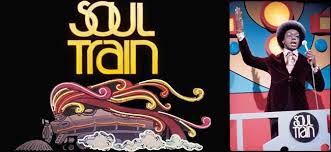Broadway dreams being immediately blown up into pending productions is something that really gets my goat. Why? Because it’s a case of hyperbole becoming ostensible fact in the press, and the only people it serves are those trying to make a nascent production into reality.
When I last wrote about this phenomenon about nine months ago (it really makes me cranky), I suggested that it makes an argument for why paid professional arts journalism is so essential – to separate real news from puffery. I regret to say that I’ve been proven wrong in that regard.
 Perhaps you saw one of the many announcements yesterday about the new Broadway show based on the syndicated TV series, Soul Train. “‘Soul Train’ Headed for Broadway” was the headline in both USA Today and The Chicago Tribune. “Soul Train’s A Comin’ To Broadway,” declared The Wall Street Journal. “Rock Of Ages producer is bringing Soul Train to Broadway,” announced The A.V. Club.
Perhaps you saw one of the many announcements yesterday about the new Broadway show based on the syndicated TV series, Soul Train. “‘Soul Train’ Headed for Broadway” was the headline in both USA Today and The Chicago Tribune. “Soul Train’s A Comin’ To Broadway,” declared The Wall Street Journal. “Rock Of Ages producer is bringing Soul Train to Broadway,” announced The A.V. Club.
Here’s the problem. There is no Soul Train musical. No writers. No director. It’s unclear if any music rights have been acquired. All there is, right now, is a producer who has licensed the trademark and plans to develop a show.
Every article I saw actually makes note of this fact in some way, but it’s buried at least a few paragraphs in. One of the examples cited above makes it the very last sentence. But I’d be willing to bet that the vast majority of people who glanced at this story (with 120 Google News citations and climbing) thinks it’s a done deal.
Mind you, I take no pleasure in pointing this out, because I know three out of the four journalists involved in these stories pretty well, and I may get some grief from them. It’s certainly worth pointing out that journalists rarely write their own headlines, so the majority of the responsibility may not lie with the writers. In our clickbait world of online news, “happening” is much stronger than “may happen,” although such a distinction can be quickly elided by aggregators. But somewhere along the way, accuracy is sacrificed.
But I should in all fairness note that headlines more reflective of reality did appear: “Soul Train Aims To Pull Into Broadway Station” (Variety), “Soul Train May Boogie To Broadway” (The Grio, running an Associated Press story), and “Soul Train Making Tracks To Broadway?” (San Diego Union Tribune) are examples. Jim Hebert at the Union Tribune struck a strong note of skepticism in his copy, going so far as to say “don’t hold your breath on this one…” The cause is not lost.
I suppose if I were the producer and publicist for the show – and keep in mind I was a publicist for more than a decade – I’d be thrilled by the amount of attention garnered by the existence of a legal agreement. But when I see so many worthy arts activities that actually exist, eager and even desperate for media attention, this inflation of intentions is really rather depressing. I assume anyone who has a show that has already been written feels much the same way. But clearly the retro lure of a famous brand, with photos ready to run, holds greater sway than what’s happening now (those last three words actually being connected to a property someone may option any day).
In the film The Man Who Shot Liberty Valance, there’s a famous quote: “When the legend becomes fact, print the legend.” Fifty years later, it’s been simplified in a way that would make Jimmy Stewart, John Wayne and perhaps even Lee Marvin blanch, since we no longer wait for something to become legend: “Print the hype, with a great headline.”




Leave a Reply